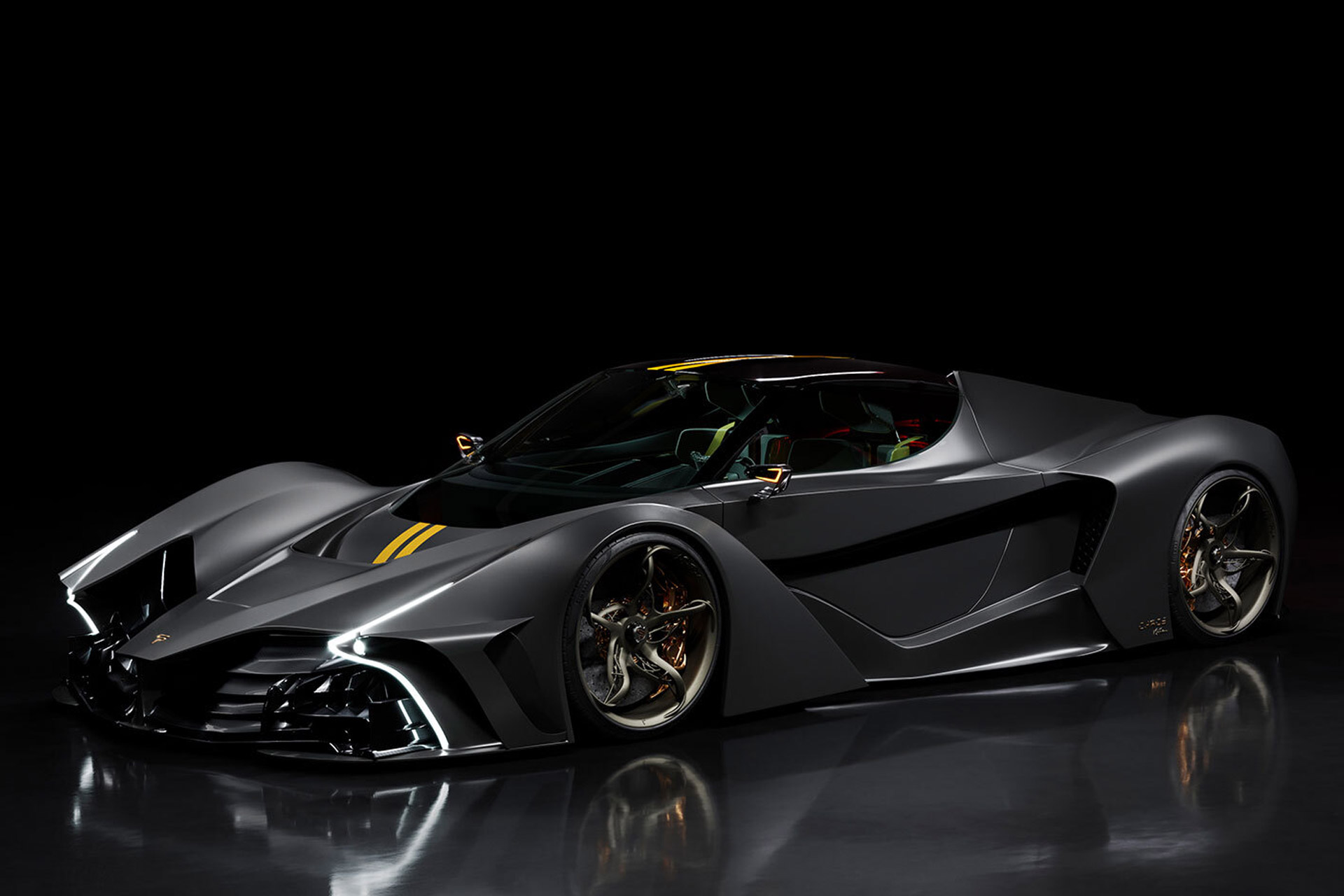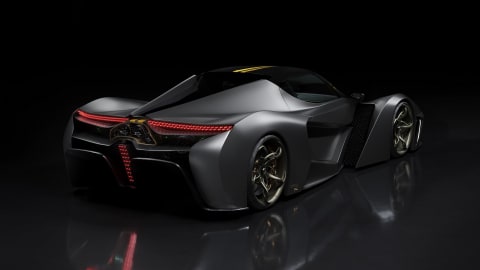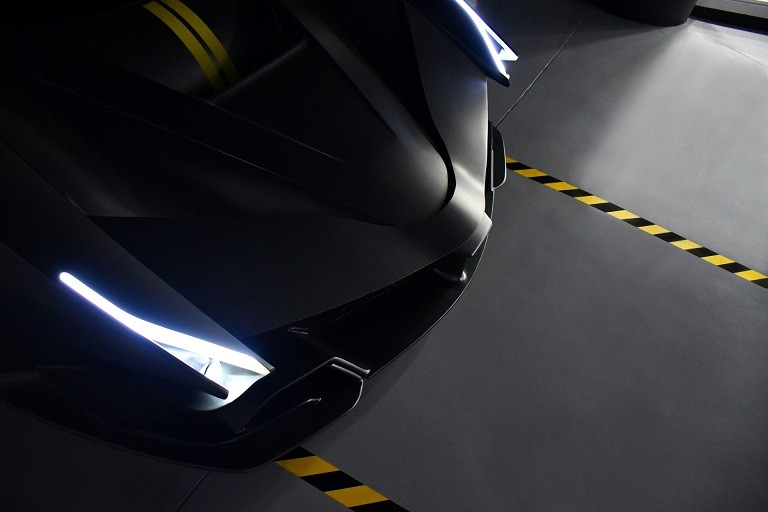Spyros Panopoulos Automotive has hit nearly all the prime touchstones in the hypercar genre. The car’s got a wild name: Chaos. It’s got grand, abstract trims: Chaos Earth, and Chaos Zero Gravity. It’s got wild horsepower: either 2,049 horses in Earth guise or 3,065 in Zero Gravity form. It’s got components made from expensive and exotic materials, like 3D-printed titanium and Zylon.

The performance claims are monumental: zero to 62 mph in 1.55 seconds for the Zero Gravity, 62 to 124 mph in another 1.7 seconds, and a top speed beyond 310 miles per hour. But the first of three unexpected derivations from the hypercar game are the Chaos’ country of origin: Athens, Greece, a completely in-house product of Panopoulos Automotive, which apparently produces specialized parts for exotic production cars. The second is its price, either 5.5 million euros ($6.3M U.S.) for the Earth, and 12.4 million euros ($14.1M U.S.) for the Zero Gravity. That last is its creator’s insistence that he’s gone beyond hypercars to create the first “ultra car.”

When you have a look at the ground clearance, the lengthy front overhang, the lowest-profile rubber we’ve ever seen on a roadgoing car, and the tapering cabin that looks like a luxurious sausage casing, keep the words of Spyros Panopoulos in mind: “‘Chaos’ is not a racing car, it is a city car, a car for everyday, only with more sophisticated performance. We want it to be suitable for the everyday commute and for all categories of drivers, as it will be easy to configure for use anywhere between 500 and 3,000 horses.”

We’ll start with the meat, which is a 4.0-liter twin-turbo V10 also developed in-house and mounted behind the cabin. We’re told that engine is built around either a billet aluminum or 3D-printed magnesium alloy block, with 3D-printed titanium pistons and con-rods, a 3D-printed camshaft that looks like a Gaudi artwork, force-fed air through titanium and magnesium turbochargers encased in carbon fiber piping.
:no_upscale()/imgs/2021/11/02/12/4999805/76c906c6240f4a24de65533ac3f57750150cd8e7.jpg)
The only major engine difference between the two trims is the amount of turbo boost, rev limit, and gasoline spec. The Earth adds 1,025 pound-feet of torque to its output and revs to 11,000 rpm max, helping it get to 62 miles per hour in 1.9 seconds. The Zero Gravity runs on E85, throwing 1.463 lb-ft at any problem, revving to a max of 12,200 rpm. The company claims the Zero Gravity runs the quarter-mile in 7.5 seconds, which is 0.4 seconds more than it takes the car to hit 186 mph. Both trims shoot their flames out a set of 3D-printed quad-pipes.

Around that, the monocque chassis is made of Zylon, a synthetic polymer, and we’re told that “78% of the body is Anadiaplasi 3D printed from titanium and magnesium alloys and carbon fiber or carbon Kevlar body parts.” Anadiaplasi is a manufacturing technique Panopoulos Automotive claims the credit of creating. Independent suspension all around uses titanium or magnesium wishbones.

The front wheels are 21-inchers in 3D-printed magnesium, the rears are 22-inchers in 3D-printed titanium. They hover around carbon ceramic brakes up to 19 inches wide, clamped by 3D-printed brake calipers. The Chaos Earth weighs a reported 2,839 pounds, the Zero Gravity, with its greater use of lightweight materials, weighs a reported 2,804 pounds.

The cabin is all carbon fiber, magnesium, titanium, Zylon, and Alcantara. There’s a yoke steering wheel with a screen in the middle, and another couple of screens fronting almost the entire instrument panel.

Panopoulos says he’s had the first deposit and plans the first delivery in the middle of 2022. The production plan is to build 20 cars for each continent, which we’ll assume means contents with permanent human populations, so 120 cars. Sotheby’s is said to be the exclusive distributor. As for seeing the Chaos in action, record-breaking attempts are slated for 2022 and 2023 at places like the Nürburgring and the Ehra-Lessien test track, and Top Gear is meant to get one in 2022 for an independent test of all those claims.






